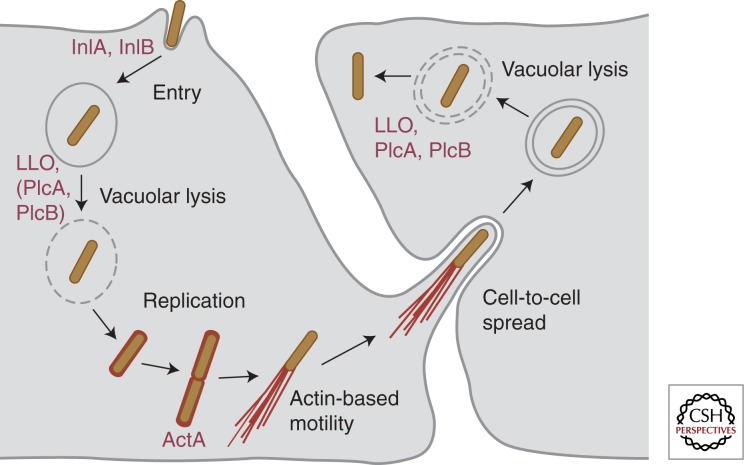Figure 1.
Intracellular cell cycle of L. monocytogenes. L. monocytogenes binds to epithelial host cells and promotes its own uptake in a process mediated by the two bacterial surface proteins InlA and InlB. The secreted pore-forming toxin LLO (together with the bacterial phospholipases PlcA and PlcB, depending on the cell type) promotes vacuolar rupture and bacterial escape to the cytoplasm, where L. monocytogenes can replicate efficiently. Surface expression of ActA allows intracellular bacteria to polymerize host cell actin and to generate actin comet tails that propel L. monocytogenes through the cytoplasm and through membrane protrusions into neighboring cells. There, bacteria localize in a double membrane vacuole, which can be lysed by LLO, PlcA, and PlcB to start a new infection cycle.

